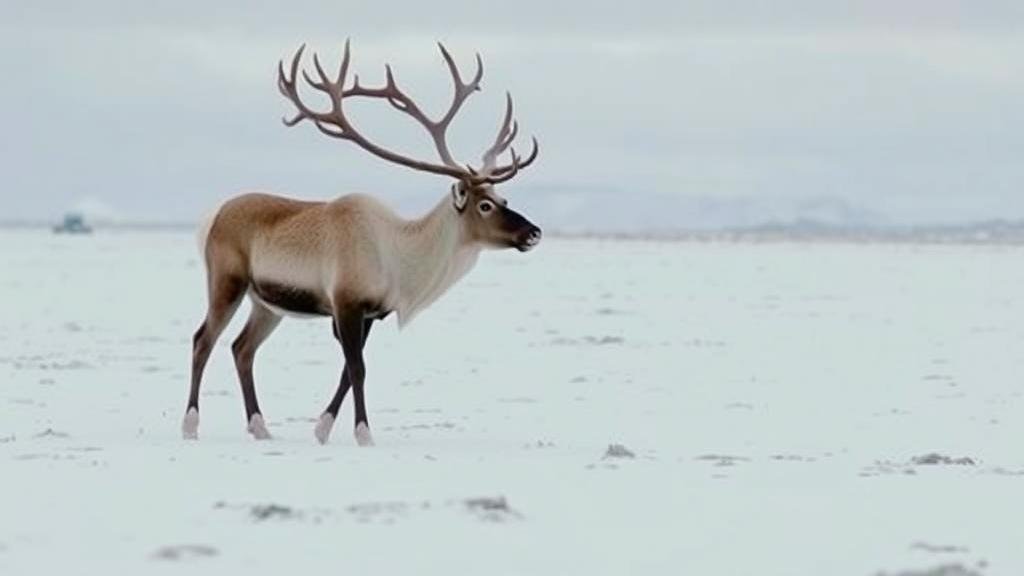Searching for the mythical “ghost caribou” said to roam Arctic tundra.
The Mythical Ghost Caribou: An Arctic Enigma
The Arctic tundra, known for its stunning landscapes and diverse wildlife, has long captivated the imaginations of explorers and scientists alike. Among the fascinating creatures rumored to inhabit this frigid expanse is the elusive ghost caribou. With stories woven into the cultural fabric of Indigenous Northern communities and whispered about by adventurers, this mythical creature remains a subject of intrigue and mystery. But what exactly is the ghost caribou, and why has it captured the fascination of so many?
What is the Ghost Caribou?
The term ghost caribou often refers to the rare white caribou, a genetic variant of the common caribou found in North America. Unlike the typical brown and gray tones of their more prevalent counterparts, these individuals possess an unusual, strikingly light-colored coat. This unique coloration is attributed to a lack of pigment, specifically a genetic mutation affecting their fur. While the phenomenon of white caribou is recognized scientifically, folklore has imbued it with mythical qualities, portraying these creatures as supernatural beings that roam the tundra.
Historical Context and Cultural Significance
The ghost caribou has deep roots in the stories and traditions of Indigenous peoples of the Arctic, such as the Inuit and the Dene. Many legends describe encounters with the ghost caribou, often depicting it as a spiritual guide or a symbol of transformation. For example, the Sahtu Dene of the Northwest Territories believe the ghost caribou can serve as an omen or a messenger from the spirit world. Such beliefs underscore the importance of the caribou as a cultural icon in Indigenous life, teaching lessons of respect for all living beings within the ecosystem.
- Inuit mythology often portrays the ghost caribou as a protector of the tundra.
- The Sahtu Dene attribute spiritual significance to sightings, treating them as signs from ancestors.
Scientific Perspective and Research
From a scientific viewpoint, the ghost caribou is a topic of ongoing research. Ecologists monitor caribou populations to understand their migration patterns, population dynamics, and habitats. According to the Northwest Territories Environment and Natural Resources, caribou herds have been experiencing significant population fluctuations due to climate change, habitat loss, and increased predation. This intricate web of biodiversity highlights the role of wildlife management in ensuring the survival of these majestic animals.
In 2018, a study published in the journal Wildlife Biology documented the occurrence of white caribou in the Bathurst herd, one of the largest caribou populations in Canada. findings indicated that sightings of white caribou were rare, comprising less than 1% of the population. The studys authors emphasized the importance of habitat preservation and continued monitoring to safeguard this unique genetic variation.
Real-World Applications: Conservation Efforts
Recognizing the delicate balance of the Arctic ecosystem, conservationists are advocating for policies aimed at protecting caribou habitats. Efforts include:
- Useing strict regulations on land use in critical migration corridors.
- Engaging Indigenous communities in wildlife management strategies.
- Conducting regular population assessments to track changes in herds.
These initiatives are vital not only for the caribou but also for the overall health of the Arctic tundra. Increased collaboration between scientists, policymakers, and Indigenous groups is essential to preserve these majestic creatures for future generations.
Conclusion: The Allure of the Ghost Caribou
The ghost caribou, with its ethereal presence and cultural significance, serves as a poignant reminder of the intricate relationships between wildlife and their ecosystems in the Arctic. While science has begun to unveil the mystery behind these rare animals, the stories and legends endure, captivating the hearts and minds of many. Whether as a symbol of spirituality or as a focus of conservation efforts, the ghost caribou continues to be a subject of fascination, representing the beauty and fragility of life in one of Earths most remote regions.
To wrap up, while the quest for the ghost caribou may be steeped in myth, it encourages a deeper understanding of wildlife conservation and the value of Indigenous wisdom in protecting our natural heritage.


